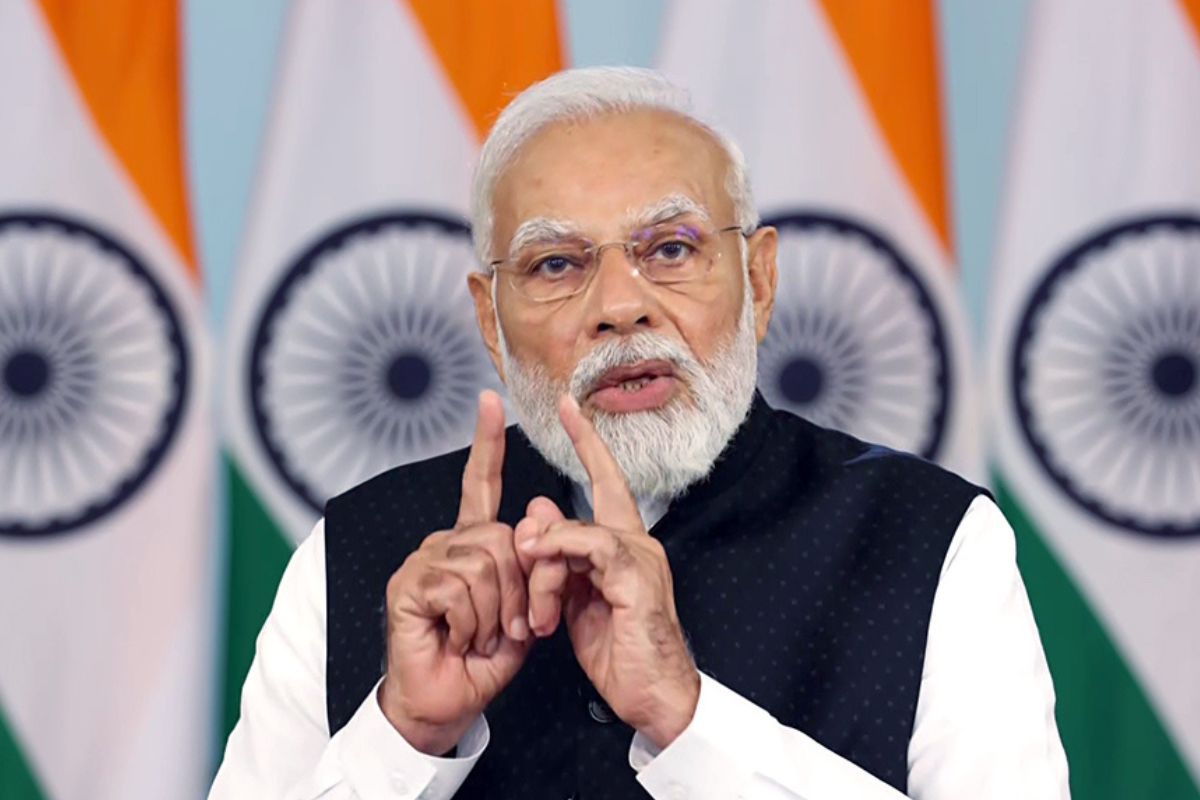Prime Minister Narendra Modi on Friday said during nine years of his Government, technology has brought efficiency and convenience to lives of people and is helping build a digitally empowered India.
In a tweet, he said “India embraced technology to revolutionise governance and uplift service delivery.” Modi has shared articles and videos on “9 years of tech for growth.”
Advertisement
Prior to 2014, due to factors such as inequality in education, cultural disparity, disability or learning issues, India suffered significantly from a “digital divide.” Socio-economic and geographical factors aggravated this divide in India.
The Modi-led government came into power in 2014 with the promise of good governance and development for all. E-governance was made the cornerstone for public service deliveries. To realize the dream of a digitized India, the Digital India initiative was launched in 2015.
Different pillars of Digital India include components like broadband highways, universal access to mobile connectivity, E-Kranti National e-Governance Plan among others.
The government undertook many path breaking projects. One such step was the JAM trinity, linking the Aadhaar card with Jan Dhan accounts. These new bank accounts were linked to both mobile numbers and Aadhaar, creating the Jan Dhan-Aadhaar-Mobile, or JAM trinity.
This digital network enabled direct transfer of funds to beneficiary accounts, without leakage. JAM supported the cause of maximum value for every rupee spent. It speeded empowerment for the poor and technology penetration among the masses.
In these nine years, the internet subscription has increased by 150 per cent in both rural and urban areas. Leakages worth Rs 2.25 lakh crore have been saved due to Direct Benefit Transfer (DBT) of funds.
Common Service Centres (CSCs) have made major government and business services accessible in rural areas through digital mode. It has created over 3.8 lakh Village Level Entrepreneurs (VLEs) as operators of CSCs. Over 400 digital services are being offered by these CSCs.
So far, 5.21 lakh CSCs across the country are functional (including urban & rural areas), of which 4.14 lakh CSCs are functional at the Gram Panchayat level, the documents show.
Another service that works in bridging the digital divide is DigiLocker, which allows users to share and access any certificates and documents digitally. As of May, 2023, more than 16 crore users have registered on DigiLocker, and over 562 crore documents have been uploaded on the app.
UMANG is another one stop platform that provides pan India e-Gov services ranging from central to local government bodies. More than 1668 e-Services and over 20,197 bill payment services are available at UMANG, and over 358 crore transactions have been done on the app. Governance-centric participatory platform MyGov has over three crore registered users.
It has been challenging to empower a populous country like India digitally. Despite this, the government was successful in bridging the digital divide and making India more equitable in accessing technology to a large extent.
Now, India is the world’s largest “connected” democracy, with more than 80 crore of the population accessing the internet. Digital transactions in India have grown manifold, from 127 crore in 2013-14 to 12,735 crore in 2022-23. The effort is now to integrate and enable these services in local languages through AI based language platform Bhashini.
In other technology spheres, unlocking India’s potential in the space sector, the government allowed private players to manufacture and launch space vehicles along with government support.
The Indian space market has experienced exponential growth in the past few years. In the last nine years, 388 foreign satellites have been launched. Investors are pouring millions of USDs into Indian space startups, as they see value in the less-costlier launches of satellites to space.
Multiple programmes have been implemented since 2014 to recognise, develop and promote technological innovations through start-ups, making them capable of raising private investments and job creation in India. Since the inception of the scheme in 2016 till April 2023, India has over 99,000 DPIIT-recognised start-ups, which are spread across 56 diversified sectors.









